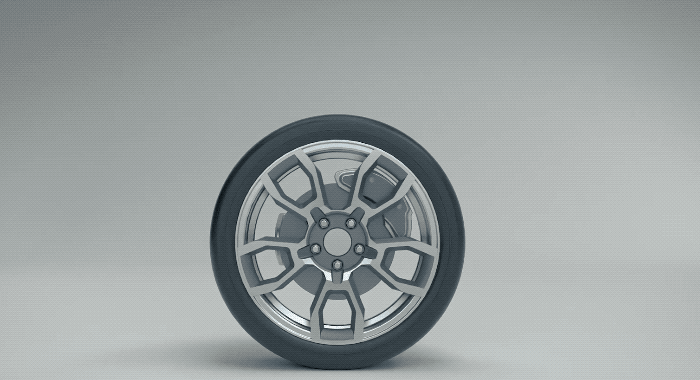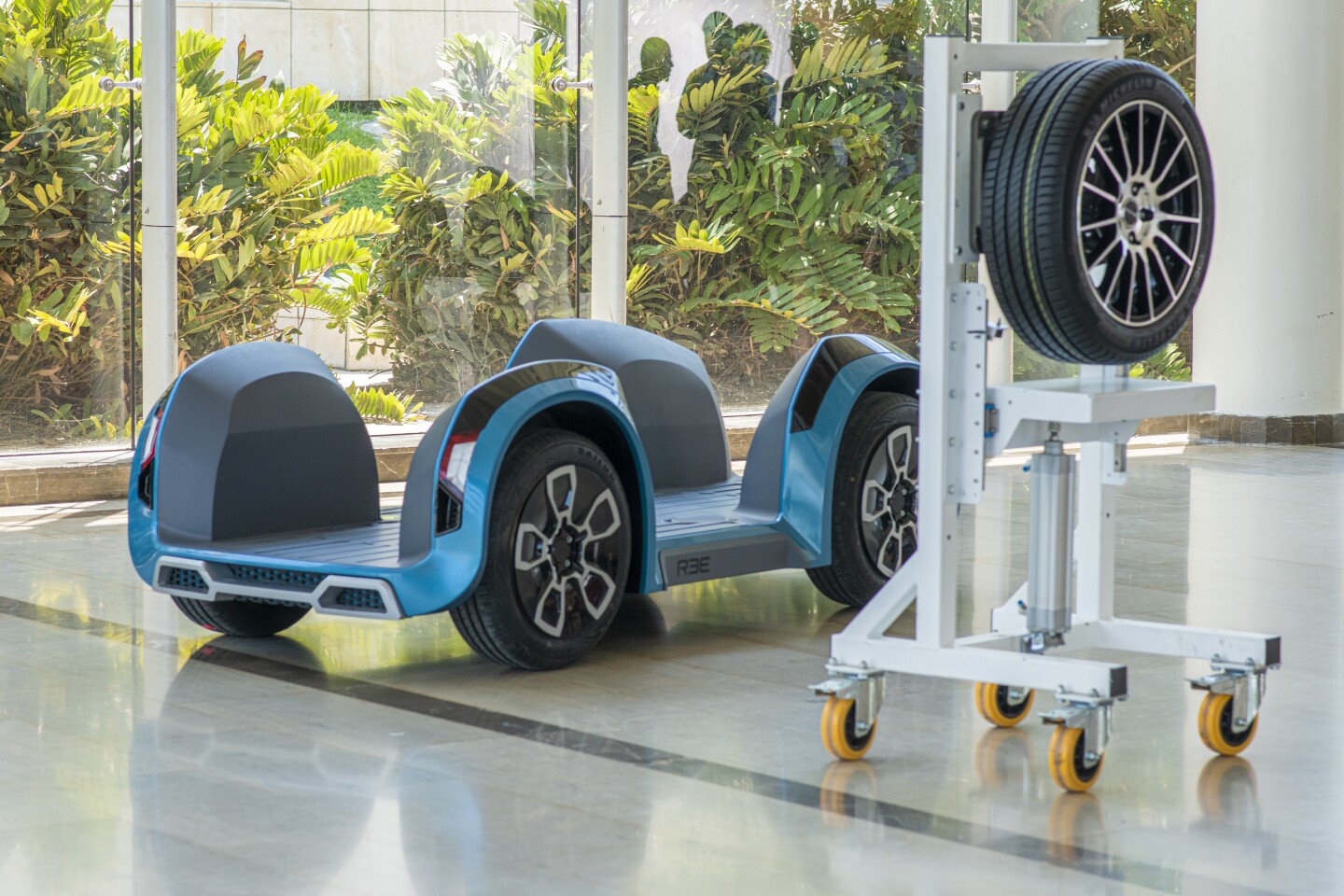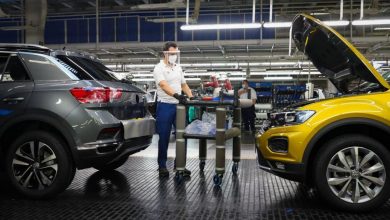
REE showing progress in its mission to upend the automotive industry
REE’s quiet plans for world automotive industry domination are coming along quite nicely, thank you. This Israeli company’s revolutionary approach to vehicle development upends all traditional approaches and offers some huge advantages moving into the electric age.
These guys don’t build vehicles; they build platforms for other people to build vehicles on top of. Just about any kind of electric vehicle too, from lorries to sports cars to off-roaders and autonomous delivery pods. All are possible using the company’s hyper-modular architecture, which gives you the flattest, most spacious “skateboard chassis” on the market, and moves the vast majority of the car’s core functions into removable “corner modules” at each wheel.
These corner modules are ingenious inventions, combining an incredible amount of functionality into a single chunk that can be quickly removed or even swapped out for instant servicing. Each of these modules can include wheels, brakes, active or passive suspension, motors and steering – an entire drivetrain, steering and braking system built into a single unit that bolts onto the chassis. These components might be sprung, or unsprung, depending on the application.
It’s impossible to get more specific than that, because REE says it can tailor each of these components more or less exactly how you like. So your chassis can be a powerful 4WD with long-travel, active suspension, two-wheel steering and heaps of torque, or you can go for low-powered two-wheel drive, minimal suspension and four wheel steering and make yourself a super-maneuverable delivery or warehouse bot.
Because it’s all electronically controlled through ECU brains in each wheel module, you can build your vehicle with a steering wheel and let people drive it, or you can connect it all up to whatever autonomy software you choose. Hell, you can make it remote-controlled if you like. The platform doesn’t care what it’s carrying or who’s in control.
Maintenance couldn’t be easier; jack the vehicle up, pull the corner module off, and either swap in a new one (very handy if you’re running a large fleet) or repair or replace individual components. Each module has its own preventative maintenance capabilities built in, with sensors constantly monitoring vibration, temperature, sound and other factors so it can alert you well in advance if something’s starting to go skewiff.
This kind of platform might not look like a rev-head’s cup of gasoline, but it offers automotive manufacturers some hugely compelling advantages in the vehicle development cycle. A single chassis can be used for a huge range of different vehicles, vastly reducing development cycle costs and homologation testing requirements even if you want to make slight changes to things like wheelbase measurements. With the basic architecture set, you can easily design new corner modules to change or upgrade capabilities, and the platform can accept whatever battery technology you like, or indeed a hydrogen fuel cell powertrain if that’s in your roadmap.
A partnership with Toyota’s truck subsidiary Hino
The whole concept seemed annoyingly nebulous last time we spoke to REE, but when we spoke again last week, there was a concrete victory to report: Toyota has bought into the REE system, to the point where it will underpin the new “FlatFormer” range of electric vehicles for Toyota’s commercial truck subsidiary Hino.
“This is the first time in Hino’s history where they’ve announced a single platform, fully flat, fully modular, for the entire future offering,” REE CEO Daniel Barel told us over a video call. “And REE is producing and designing the corner modules that make this possible. It’s quite big, a 6×6 vehicle over 6 ton. We’re doing the whole drivetrain for them. There are two different corner modules, the front one is quite large, and the rear one has smaller diameter wheels.”
Toyota presented the platform as a concept at the Tokyo Motor Show, replete with a vast range of vehicle bodies that could be built on top of the platform, ranging from passenger shuttles and delivery vans to mobile shopfronts, catering vans, mobile medical services, garbage trucks and more. The presentation included this terrific exploded view of the front and rear corner modules:
“This is literally our vision,” says Barel. “One platform, fully modular, to be able to take any kind of vehicle. Passenger, delivery, maintenance, recycling, heavy, light, fast, any kind you want. This is coming from Toyota, you can understand the levels of due diligence we’ve had to go to.”
Moving into the delivery space
One of REE’s other immediate targets is the delivery sector. “We’re working with every delivery company you can think of,” says Barel. “Big logistics companies as well as e-commerce companies building their own fleets.” The company believes its offer will eventually prove unbeatable due to modelling that suggests vehicles built on an REE platform will be able to reduce the average package delivery price by as much as 33 percent.
This comes down to a combination of factors. For a given sized chassis, REE’s strategy of putting the entire drivetrain in the corners leaves more flat, packable space than any other vehicle design, electric or combustion based, for whatever you’re carrying. So you can either carry more stuff, or carry the same amount in a smaller vehicle that’s easier to park, particularly if you add some rear-wheel steering into the mix.
Then there’s the aforementioned preventative maintenance systems and over-the-air fixes, as well as the supreme simplicity of fleet repairs when you’re running a number of these vehicles. Keep a bunch of working corner units on the shelf, and when a truck comes in with a problem, you can swap a module out and have it back on the road in half an hour, with the faulty module sent off for repair.
Then there’s the fact that the entire flat REE chassis is full of battery, meaning that it can offer longer ranges than other vehicles can without compromising their cargo space, because so little space is taken up by the drivetrain. Autonomy, says Barel, won’t move the needle too much initially, because drivers still need to jump out and deliver the boxes at their destinations, so they might as well drive between deliveries. But the platforms are all “autonomous-ready” for any service that sees this as an advantage.
Transforming the automotive supply chain
Barel and the REE team are thinking very big, beyond the constraints of how vehicles are developed and built today. “I personally believe the world of automotive is changing,” he says. “From the current model with OEM/tier one/tier two suppliers, it’ll ascend to three levels of service. You’ll have platform provider, a service provider and a data provider. We’re probably gonna be the ones leading the platform providing field. Because it’s fully modular, fully ready to take anything upon itself.”
“Then there’s our ability to go to market much faster than anybody else,” he continues, “because of the way we work.” Through partnerships with, and investments from, a range of tier one component suppliers, REE has access to more than 300 production lines all over the world. Individual components are designed in conjunction with huge partners like Musashi, NSK, American Axle, and a range of suspension, braking and steering specialists that are yet to be announced. These partners then go on to manufacture the components and subcomponents, after which REE assembles them in the UK, integrating them with the custom-built ECUs and software that control the whole thing and talk to whatever system is going to drive the vehicle.
“We’re ready to take orders today,” says Barel, “which many of our… I wouldn’t say competitors, because we have not yet seen a competitor, but other companies operating in the same waters are struggling under immense capex investment and returns and time to set up production capabilities. We sorted that out before we came out of stealth.”
If the future is electric, then we can see plenty of reasons why an REE-style super-flat chassis with these fascinating corner modules could make a lot of sense for a wide range of applications. By the time things go autonomous, and the romance of driving pleasure takes a back seat to simple mobility, there’ll be little reason to deviate from these humble, practical and efficient designs. REE appears to have placed itself in an excellent position to be a driving force in the next generation of the automotive industry.
Take a look at some prototype chassis and wheel module designs in the video below.








